Bahir Dar: Lake Tana Monasteries, part 2
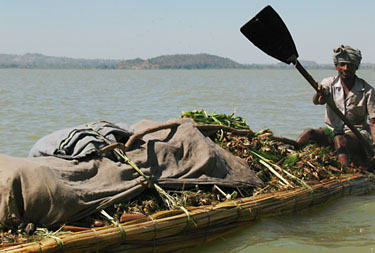 Slowing down to get that perfect tankwa shot. |
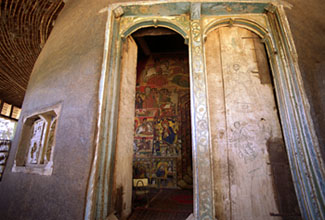 Ura Kidane Monastery |
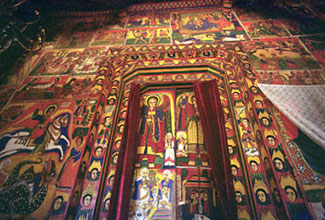 St. George rides in the left-hand side. |
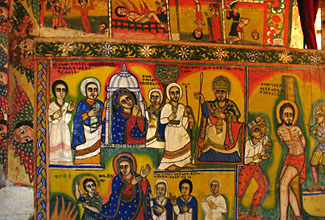 Closeup of paintings. |
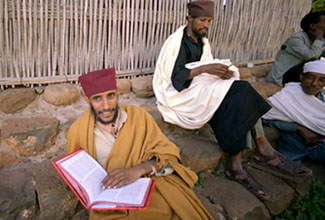 Nonchalant Ura Kidane priests, quite used to tourists. |
Depicted scenes range from Jesus receiving gifts as a child to his violent death, other martyrs meeting bloody ends as cherubic heads sadly watched on, and mysteriously, St. George and the Dragon. I never understood how this English hero crossed over into Ethiopian legend, but I'd certainly drunk my share of St. George beers. The paintings are newer than the church with the oldest at 250 years, and are in spectacular condition.
Khun had visited this church before so he'd been taken to one of the males-only monasteries, Kibran Gebriel. We tried pushing our luck but to no avail— on the monastery stairs, a sign barred women from going further.
Last stop of the day was Debre Maryam, the nearest monastery to town. Visited mainly by those on a tight budget, it was likely only included into our trip because as women we had no other options.
Unfortunately the priest could not be found—somewhat disappointing because I remembered Jess describing him as a serious camera-hog. We rested in the shade while various people told us "he's coming, he's coming" for perhaps 30 minutes or more. Having had our fill of medieval paintings, we didn't mind giving up.